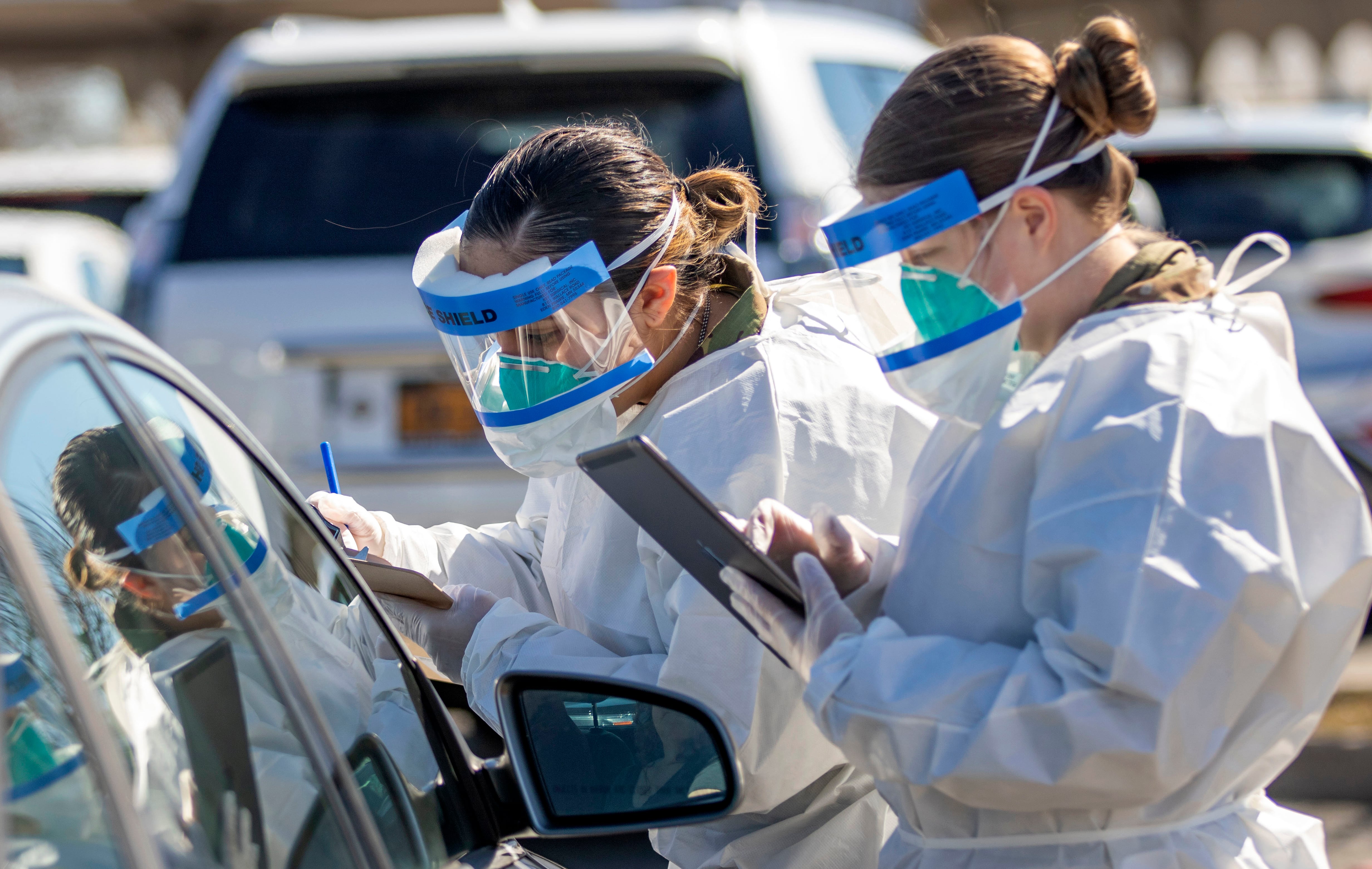While the Department of Defense and civilian public health officials discuss what troops might be able to do to help treat and combat the spread of coronavirus, Defense Secretary Mark Esper announced Tuesday that the military will open up its stockpile of medical supplies to back up civilian public health agencies bracing for an outbreak that the Centers for Disease Control and Prevention has estimated could affect more than 100 million Americans.
Up to five million N95 breathing masks and 2,000 ventilators are on tap, as requested by the Health and Human Services Department, Esper said, for distribution to civilian medical providers. However, he cautioned against the inclination to call on the military to step in and take over the country’s response to the pandemic.
“I think, in some ways, we want to be the last resort,” Esper said.
As 18 states have activated National Guard units and both New York Gov. Andrew Cuomo and White House leadership have pointed to the possibility of the Army Corps of Engineers building hospitals to treat a surge of more serious COVID-19 infections
Esper is open to activating more Guard units, as well as some Reserves under his command, as well as making the hospital ships Mercy and Comfort available to civilian agencies. But he cautioned that any military involvement would likely be to free up beds already in use for new patients in serious respiratory distress.
“Our capabilities are focused on trauma,” he said. “They don’t have necessarily the segregated spaces you need to deal with infectious diseases.”
In that case, less intensive patients could be treated in field hospitals or on-board hospital ships, freeing up space for COVID-19 cases inside the hospitals.
“Ideally what you would do is, somewhere — maybe located next to a hospital — as trauma patients come in, instead of going into the hospital, they would go into the field hospital, where we could treat the broken legs, the lacerations, the falling-down-hit-your-head type of stuff, we can handle them in our big open bays,” Esper said.
RELATED

Then there is the consideration of moving active duty medical personnel from their own installations onto the ships or into field hospitals, which lowers capacity at DoD’s 36 hospitals.
“I recognize that our decisions impact service members and their families and I want them to know we are all in this together,” Esper said.
There are 3.8 million Americans who use the military’s health care system, and while most service members are young and healthy enough to fight COVID-19 at home, there families and retirees of varying ages and health conditions also rely on that hospital system.
“I’ve got to worry about that population as well,” Esper said.
As far as charging the Army Corps of Engineers to build more hospitals, Esper reiterated that the organization is not a construction team, but a contracting group that receives funding and doles it out to private companies to build.
“My view is, I’m more than willing to send the Army Corps of Engineers to work with states to see what we can provide, what we can offer,” he said.
But similarly to the barrier construction project along the U.S.-Mexico border, there is a significant lag between the time the Corps of Engineers receives funding to the time they award contracts and teams begin to break ground.
“My hunch is, it would probably be quicker it was done at the state and local level,” Esper said.
Meghann Myers is the Pentagon bureau chief at Military Times. She covers operations, policy, personnel, leadership and other issues affecting service members.





